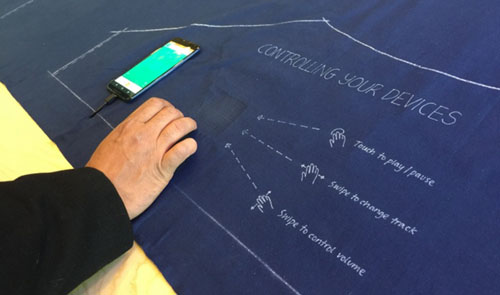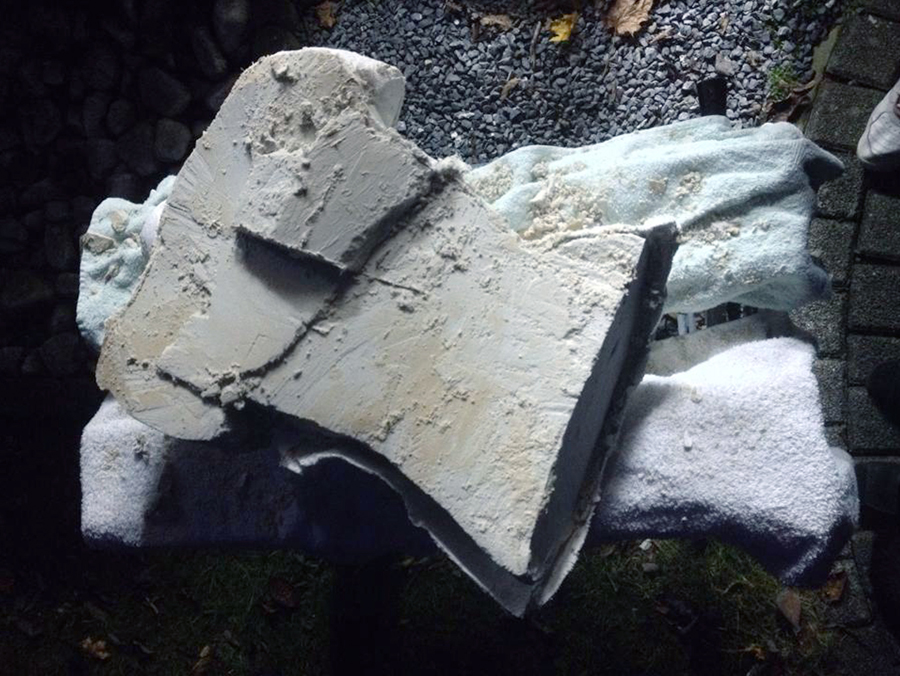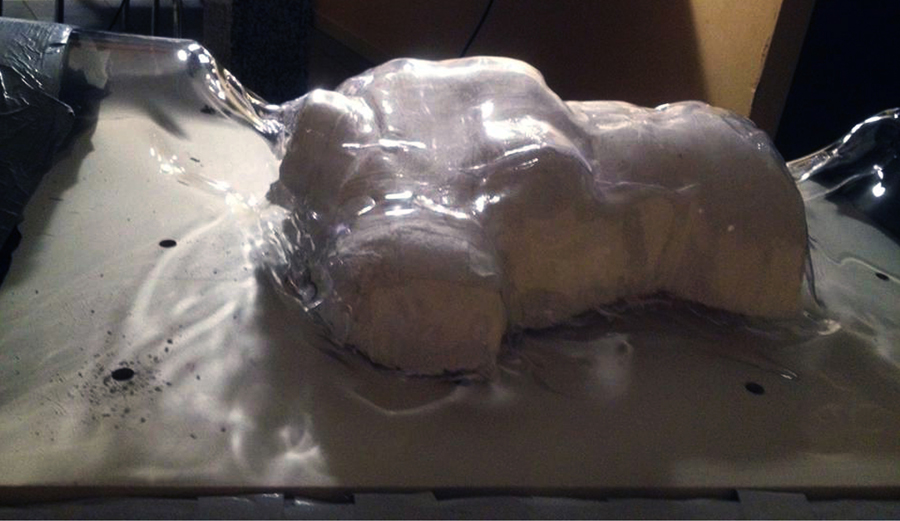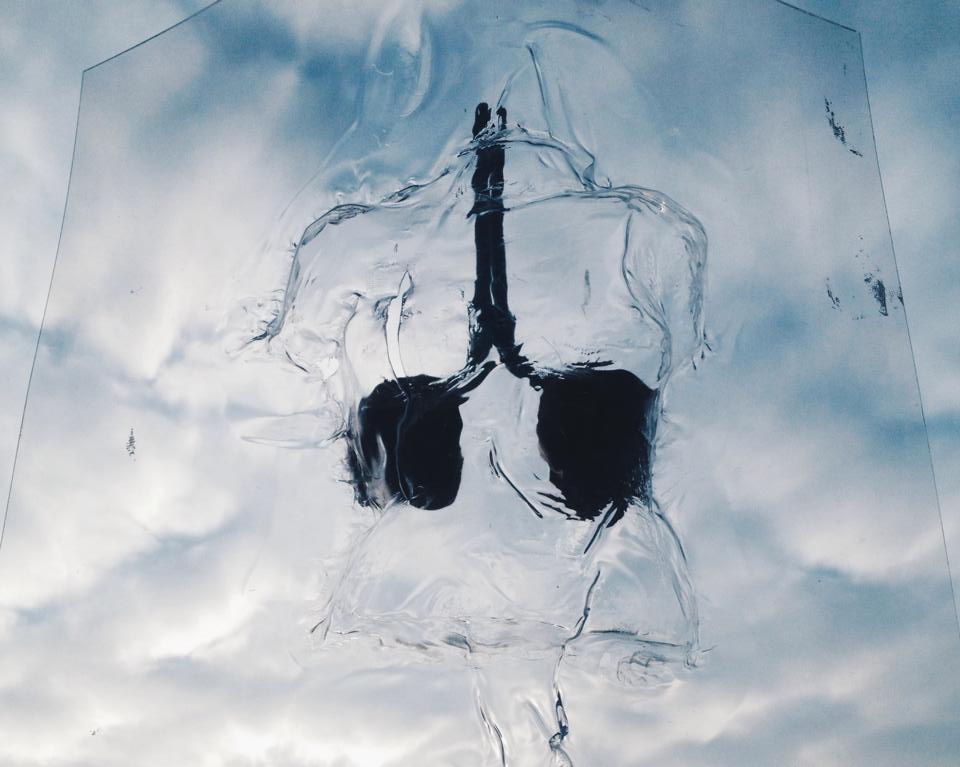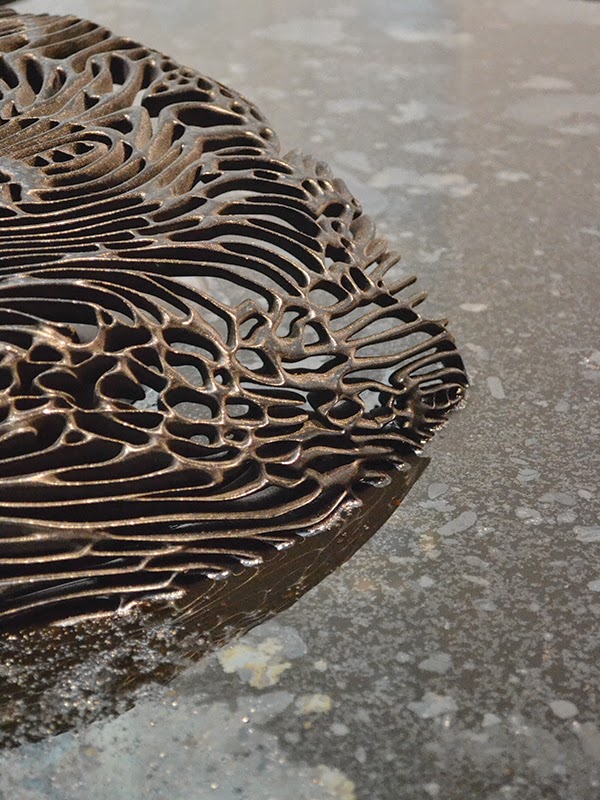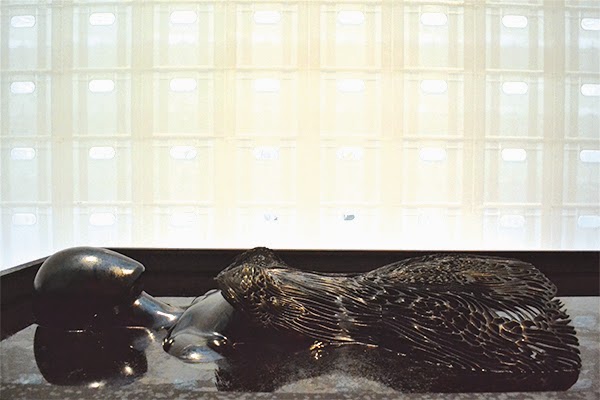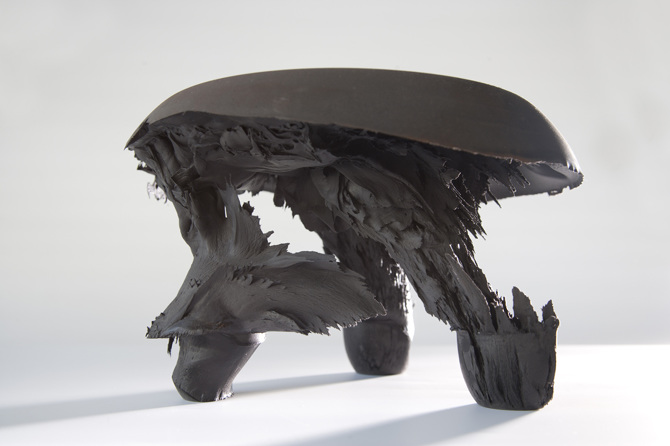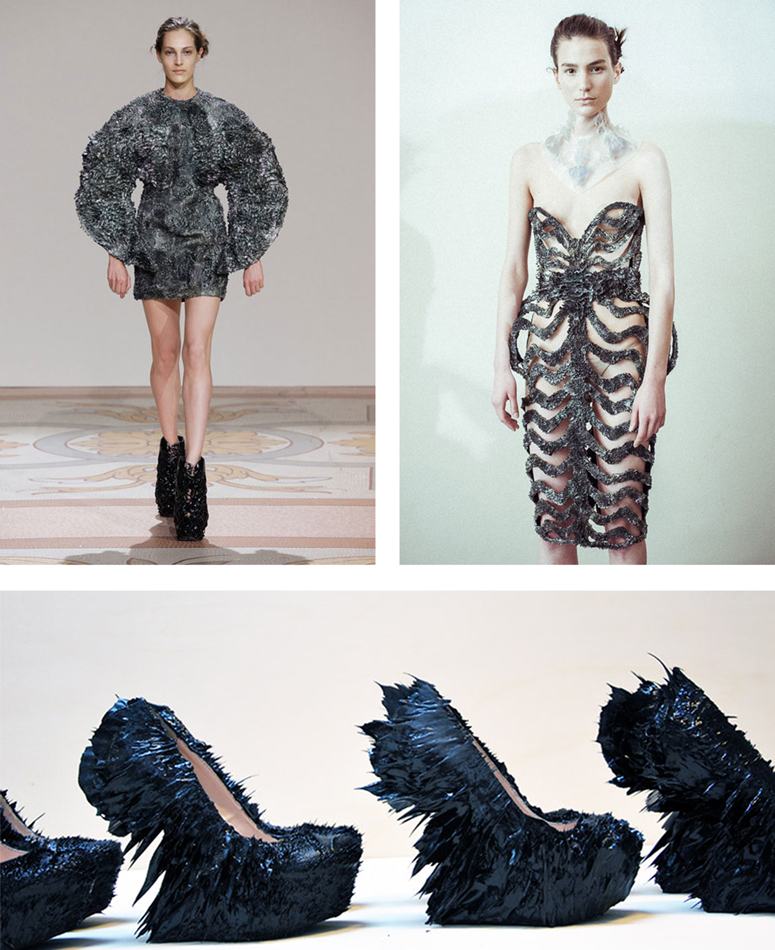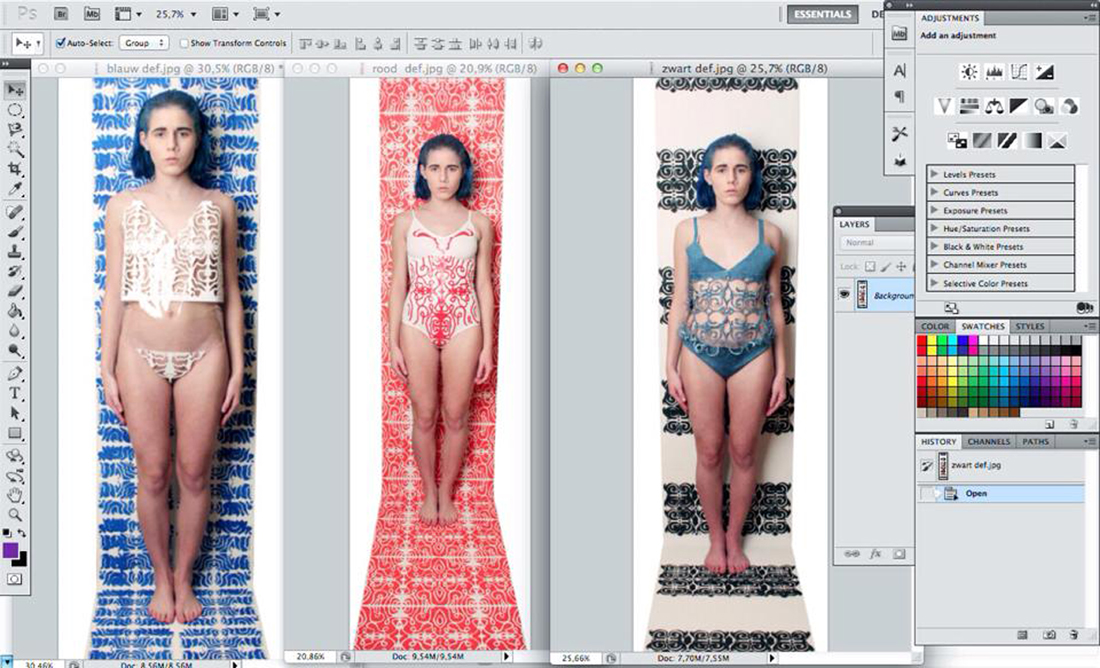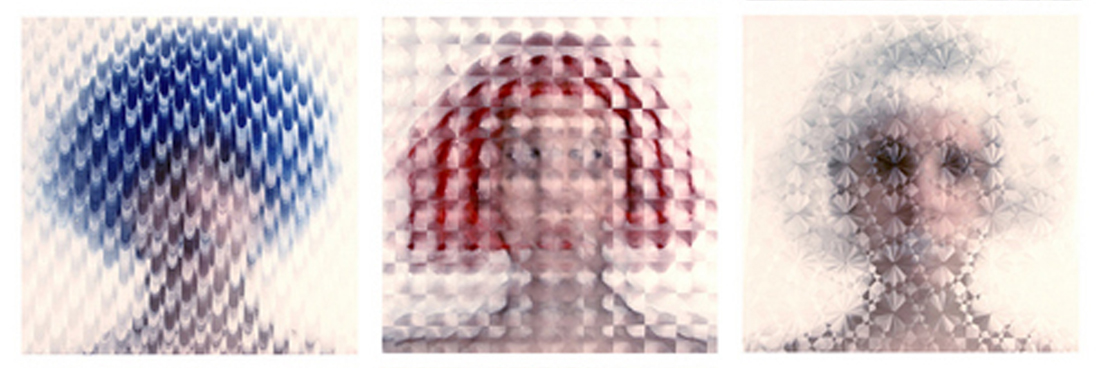WEARABLE TECHNOLOGY
Our clothes are probably some of the most tactile and flexible objects surrounding us – touching our bodies at all times. This is probably also why it has been such a hard job for designers and researchers to combine it with the stiff mechanics of technology. The term used when these fields are combined is Wearable Technology. Something that fashion designer Pauline van Dongen has been known internationally for exploring. But while Pauline van Dongens works primarily exist in the span of the human body interacting with its physical surroundings, I find it more interesting to research how technology can elevate our identity through clothing.
We use technology to perform our identities online.
We use fashion to perform our identities through garments.
Why not try to physically combine technology with clothes as a way of enhancing how we showcase our individuality and uniqueness.
“For wearable technologies to become truly integrated with fashion we have to bridge the divide between aesthetics and how we understand technology’s usefulness.” – Pauline van Dongen
FASHIONABLE TECHNOLOGY
It is obvious that clothes functions as a protective extension of the skin, but it is just as important that they help us form our individual identities. Our identities are ‘wearable’ and changeable through fashion, and have been so for a long time now. The new aspect of adding technology to this equation will hopefully be able to offer alternative and new ways of transforming our identities.
At the moment, there is already a lot of researching going on and a lot of solutions being proposed as to how wearable technology can change our current view of fashion. This research does not only include experiments like Pauline van Dongen’s, regarding the practical usefulness of technology in fashion, but can also have a more conceptual or aesthetic focus point. These projects become interesting since this is where a lot of the ‘identity-making’ in fashion occurs.
Ying Gao is another fashion designer dealing with the concept of technology intertwining with her designs. But in comparison to Pauline van Dongen she uses technology primarily for conceptual and aesthetic reasons. However, this still interacts between the human body and its surroundings, but does not allow the wearer itself to manipulate his/her clothing. Something I think that would be a logical next step with wearable technology.
Other research exemplifies how this self-initiated interaction might become possible. Dr. Sabine Seymour, who is the director of the Fashionable Technology Lab at Parsons The New School for Design in New York, has even written a book with this exact title, Fashionable Technology, that researches the intersection of design, fashion, science and technology. On top of that, several companies are working on inventions involving textile – such as touch-screen fabric. I find this study interesting because it is the steppingstone for making fashion truly customizable at any time. And not only by the external domain of a phone or computer, but by actual interaction with the textiles you put on your body. This idea of technology leading to a more tactile and touchable communication with your clothes – instead of it being dematerialized in a device – also takes technology in a totally new direction.
INDIVIDUAL TECHNOLOGY
Of course there is plenty of ways to approach linking the gap between aesthetics and the functionality of technology. Personally, I am curious about a solution where that link would manifest new ways of projecting my personal identity. Combining the idea of a, supposedly soon-to-be, future where textiles can act as touch-screens, I have tried to conceptualize how technology can have an effect on fashion and its personal value.
There is no doubt that technological innovations will have a deep impact on the meaning and communication of fashion and thereby identity.
“[…] we have now entered an age in which technology is not only a bodily extension, but also a physical improvement, enhancement and expression.”
Throughout your life your identity is constantly changing, so it seems only logical to design new types of clothing that can follow your personal development. As my video suggests, this would be possible if clothing became truly obedient to your personal wishes and could be customized with your own hands. You could then at any given moment change the appearance of your clothing – and your identity. A more analogue example of this is the Color-In Dress, made as a cooperation between Berber Soepboer (fashion designer) and Michiel Schuurman (graphic designer). Although my experiment is limited to colors and patterns, you could imagine that even shape or texture could be transformable too, with the rate technology is developing.
Indeed, this way of customizing your style is already possible, but at the expense of a fast, unsustainable and trend-driven industry. If my (suggestive) model of wearable technology [x] is realized, I believe that this would establish an intimate dialogue between body, mind and fabric – making fashion more valuable to the wearer. It is the relationship you have with your clothes and how it mirrors your personality and emotions, I find interesting to develop further with technology.
Pauline van Dongen’s vision is based on the belief that technology can add new value and meaning to fashion. She does this while focusing on the human body and an interactive relation to its surroundings. I believe, that it is just as important how wearable technology can add an interactive level to our projection of ourselves, and change our relationship with fashion on a very personal level.


